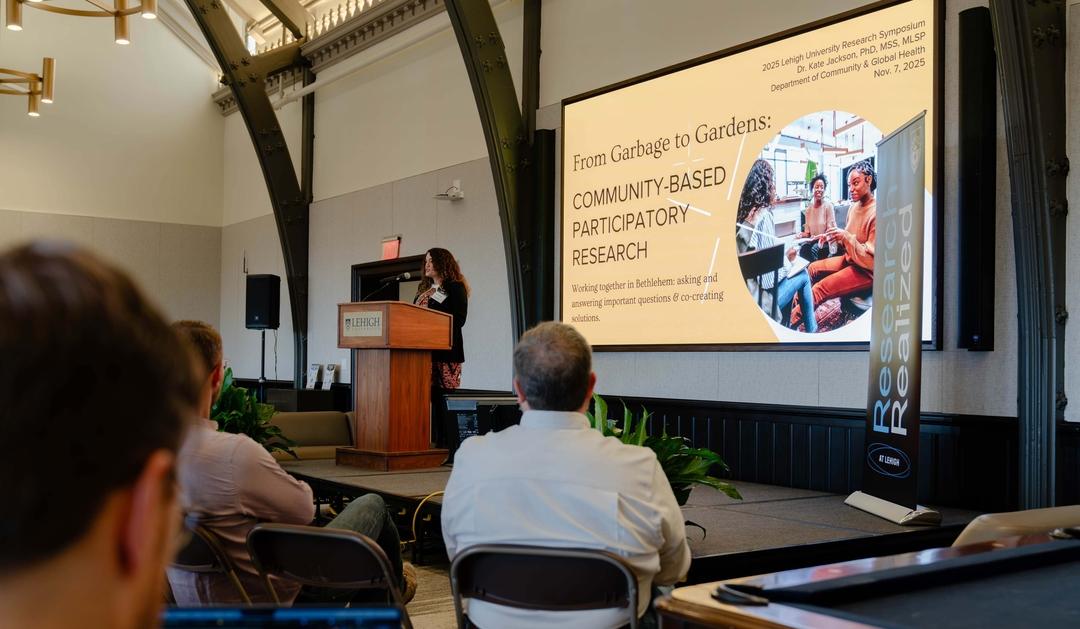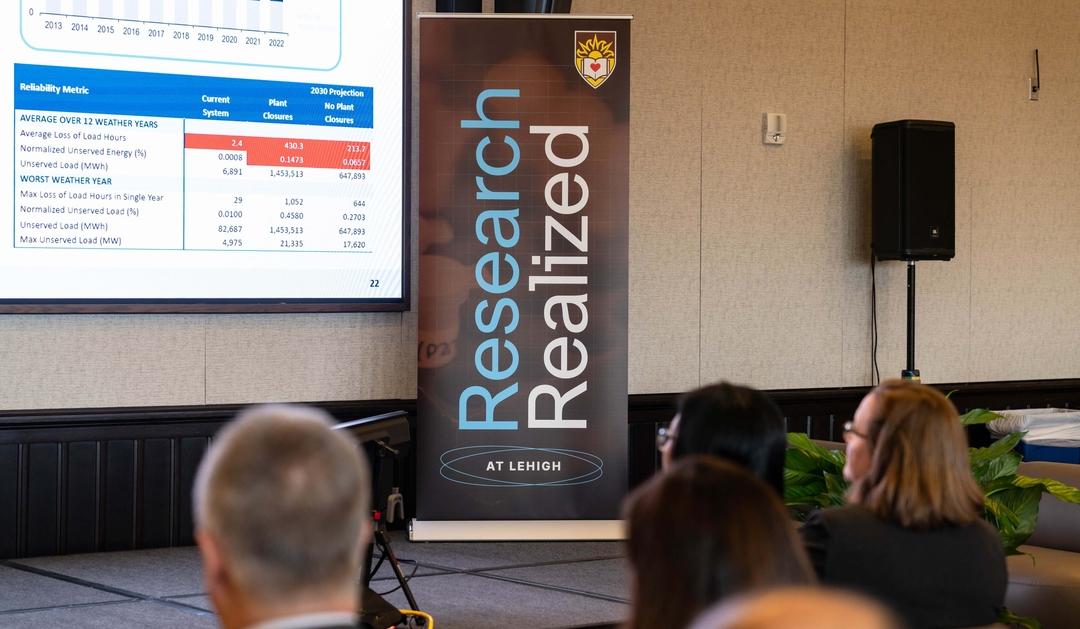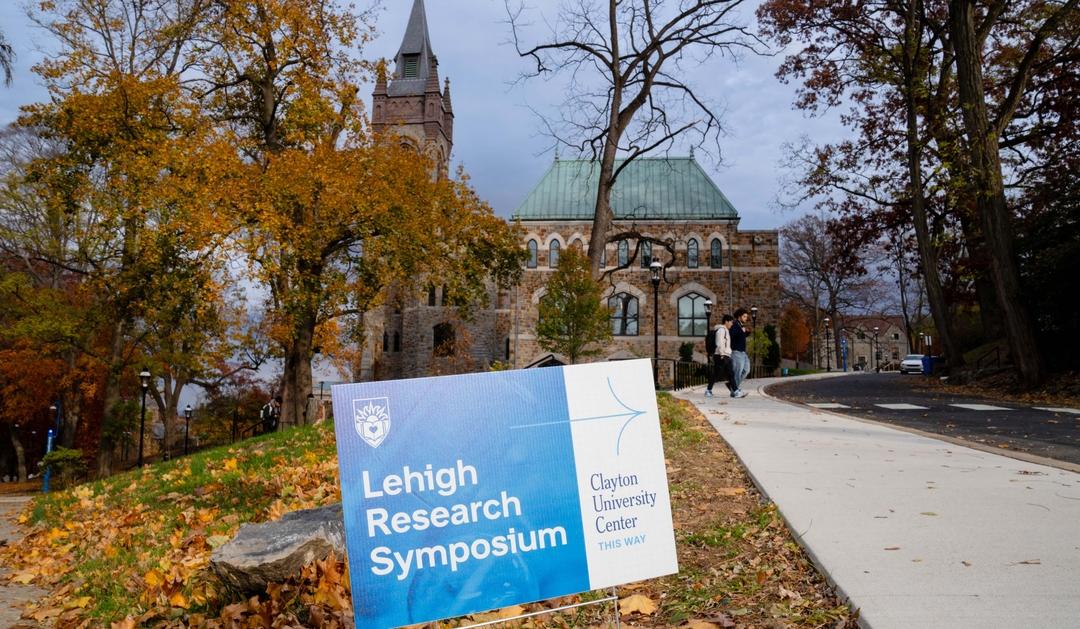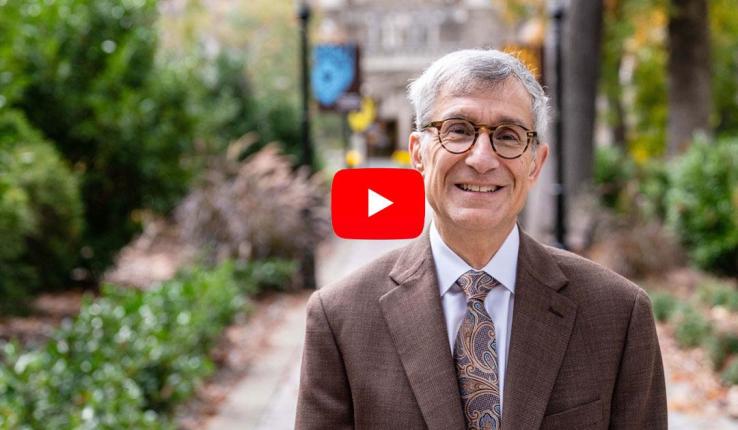Nathan Urban, provost and senior vice president for academic affairs, started the day with initial remarks, as did a video message from Pennsylvania Senator Dave McCormick, who congratulated the Lehigh community on its R1 designation and thanked the community for the work it has done and will continue to do to drive innovation and create opportunity for all in Pennsylvania.
“This achievement is a well-deserved recognition of the hard work, the partnerships and the outstanding research enterprise that you all have built right here in Pennsylvania,” McCormick said in his video message.
Urban then spoke about the history of research at Lehigh and the efforts of faculty, staff, leaders of the institution and students over the course of many years that led to this achievement.
“The successful efforts to achieve this milestone are also one reason that I believe that right now, we may be at the best moment in Lehigh’s history, and that Lehigh’s future is very bright and promising,” Urban said.
Attaining R1 status, the highest level of research activity in the Carnegie Classification system, is a milestone that means a university conducts a “very high volume of research” and awards a large number of research doctorates, according to the Carnegie Classification. The designation places Lehigh among the nation’s 187 leading research universities. Lehigh is the only university in the Lehigh Valley to have the designation and one of seven in the state.
The classification will help Lehigh attract and retain top faculty, assist in securing funding for academic research, boost the cutting-edge research that attracts doctorate-level students and benefit the community as Lehigh continues to educate a highly-skilled workforce.
To showcase examples of the exciting research happening at Lehigh, Anand Jagota, vice provost for research, introduced faculty members who presented lightning talks, each capturing their research and findings in 10-minute presentations.
Research topics ranged from artificial intelligence and political geography to medical care and quantum computing. Some of the projects have led faculty members across the world to conduct research, like Michelle Spicer, assistant professor of Earth and environmental sciences, who has traveled to the tropical forests of Panama to study “What Canopy Plants Can Teach Us About Our Changing World.”
Spicer focuses on epiphytes—plants like orchids, bromeliads and aroids—that grow perched on the limbs of trees, where sunlight and temperature can shift dramatically from the shaded forest floor below. She studies how these plant communities respond to warmer or cooler locations and physical disturbances. The results suggest that some of the communities lower in the canopy recover more quickly than those in hotter, drier canopy areas.
She explained how these communities offer a way to learn about how climate change is impacting natural ecosystems.
“Understanding, as a forest ecologist and environmental scientist, how our natural ecosystems are responding to these increased disturbances is exactly the core of what many of us are trying to figure out,” she said.
Other research projects were conducted close to home within the local Bethlehem community. Kate Jackson, assistant professor in the Department of Community and Global Health, discussed her research, “From Garbage to Gardens: Community Based Participatory Research for Local Impact,” which focuses on solving pressing environmental and community health concerns alongside the Bethlehem community. Jackson uses community based participatory research methods to identify issues that the community faces regarding trash management in Bethlehem.
“I’m grateful for the chance to highlight the power of community based participatory research and its role in producing meaningful, rigorous, rich research,” Jackson said. “This model of research is a core component in the College of Health as we work toward our mission of improving health outcomes and accomplishing health equity with the most impacted communities.”







